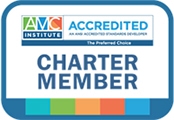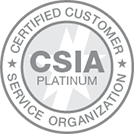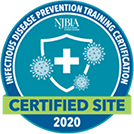We can all likely relate to that feeling of being overwhelmed and out of control when it comes to dealing with the many issues that come our way each day in the association world. Our email inboxes are perpetually being bombarded with items that require action, issues that require decision making and requests that require consideration. This is particularly true for our board presidents and executive directors.
Here are three easy strategies to foster effective communication between board leaders and executive staff to ensure everyone stays on the same page and gets the job done as efficiently as possible.
- Same Page Call*
Institute a bi-weekly “same page” call between the board president and executive director of the association. Use Google Docs to document the agenda including any issues that need to be discussed, action items to be taken and status of the to-do list. At any time, the board president and the executive director can add items to the issues list for discussion. This ensures that everything is consolidated in one place and helps cut down on individual emails being sent that can easily be lost track of. Having a dedicated day and time for the same page call to discuss issues is an efficient and effective way to manage time, forge a good relationship between the board president and the executive director, and keep both on the same page.
- Communicate Strategic Action Items

As we all know, there are always a number of strategic action items (emphasis on the word strategic) that come out of every board meeting. Those items may require action on the part of board members and/or staff. Yet, we often wait to circulate the meeting minutes until the next board meeting, missing the opportunity to remind folks of what they’re supposed to be working on. Instead, log strategic action items in a google doc to share with board and staff directly following the meeting. Individuals responsible for those items are able to update the status and the board and staff will have a clear picture of the progress that’s been made. This also will help keep everyone focused on the strategic tasks at hand, hold individuals accountable for their items, and avoid chasing those “shiny objects” that may come along and become distractions.
- Keep the Full Board in the Know
You’ll find a lot of discussion and debate around the impact an executive committee can have on board dynamics. If your association bylaws call for an executive committee and that committee is authorized to take action on behalf of the board in between meetings, it’s critically important to inform the full board of any decisions made. It’s very easy for the full board to feel left out of the loop and disengaged when executive committee decisions are made. This can quickly spiral into a dysfunctional board dynamic. At a minimum, be sure to communicate executive committee decisions in a timely manner to the full board, including minutes. Better yet, ensure that as much of the decision making and discussion takes place with the full board as possible, while following what is set forth in your association’s bylaws.
What strategies does your association use to keep everyone on the same page?
*Wickman, G. (n.d.). Traction: Get a Grip on Your Business. BenBella Books; Expanded ed. edition (April 3, 2012).




